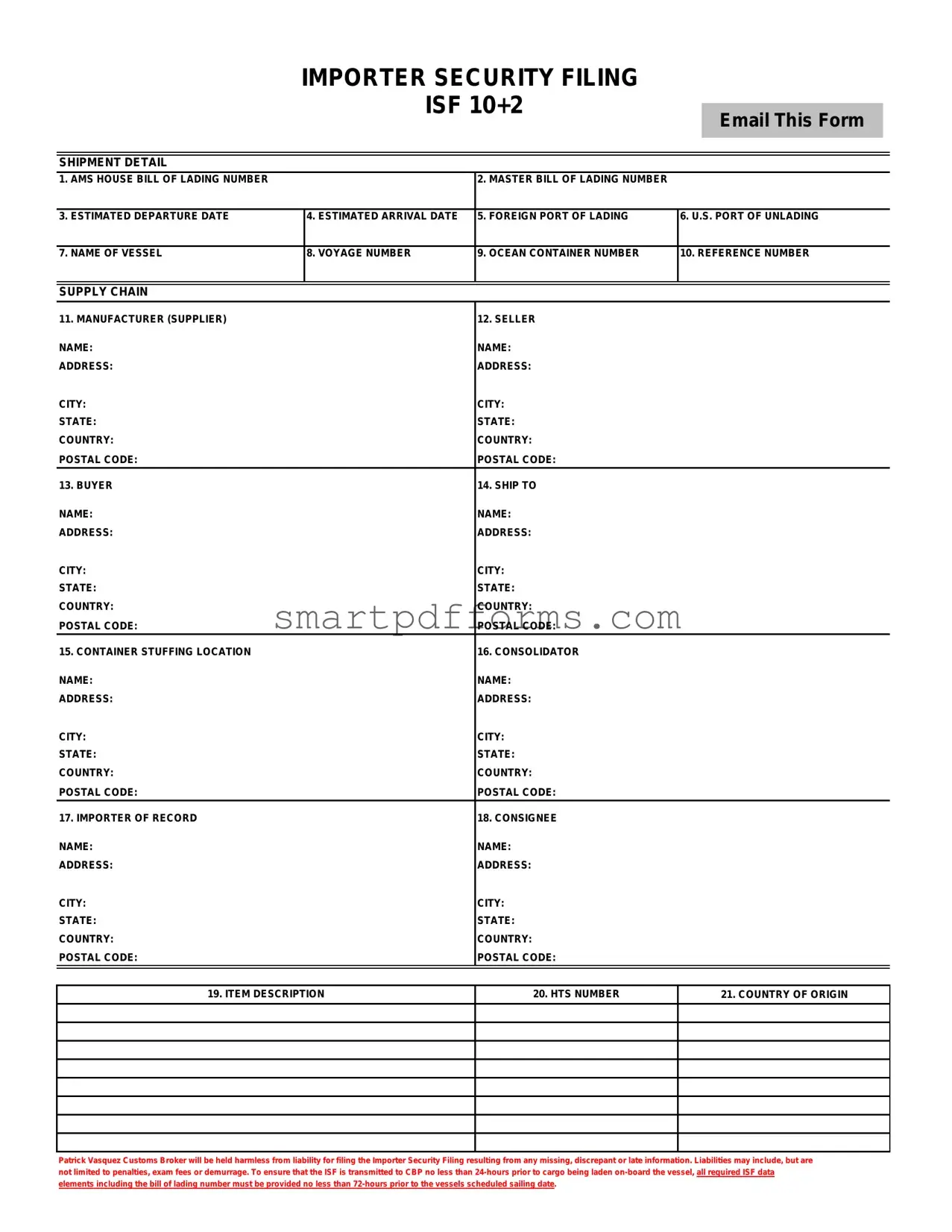The Importer Security Filing (ISF), commonly referred to as the "10+2" initiative, is a critical requirement for enhancing maritime cargo security that U.S. Customs and Border Protection (CBP) has instituted. This comprehensive document covers various aspects necessary for shipment detail and supply chain information, which includes but is not limited to the Master and House Bill of Lading numbers, the estimated dates of departure and arrival, details on the vessel and voyage, as well as the ocean container number. Additionally, it delves into specifics about the supply chain, listing detailed information about the manufacturer, seller, buyer, and the consolidation and shipping locations. The form also necessitates the provision of the importer of record and consignee details, alongside descriptions of the items being shipped, the Harmonized Tariff Schedule (HTS) number, and the country of origin of the goods. The meticulous process requires that the Patrick Vasquez Customs Broker, or any acting customs broker, be absolved of any liability for ISF filing inaccuracies resulting from misinformation or delays, highlighting the importance of timely and accurate submissions. Given the significant consequences such as penalties, exam fees, or demurrage that can arise from non-compliance, it underscores the vital role of the ISF in maintaining the integrity of international trade and cargo security. Ensuring that the ISF is transmitted to CBP no less than 24-hours prior to the cargo being loaded onto the vessel with all required data elements supplied in a timely fashion is not just a regulatory requirement but a crucial step in safeguarding global supply chains.

